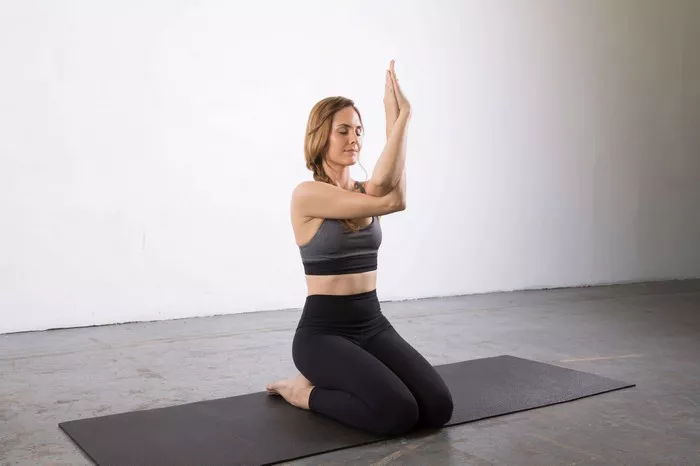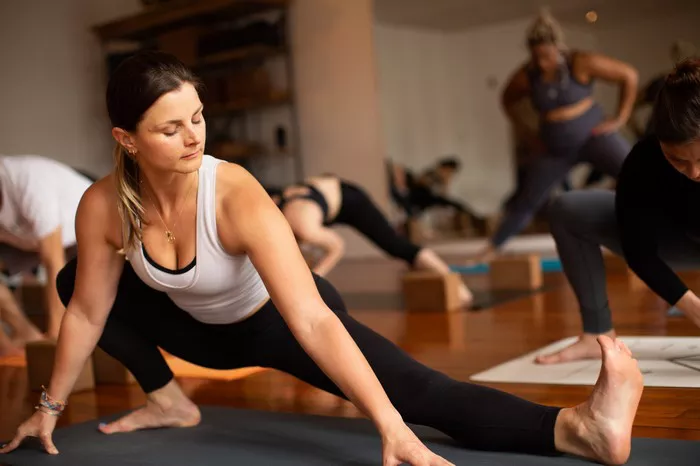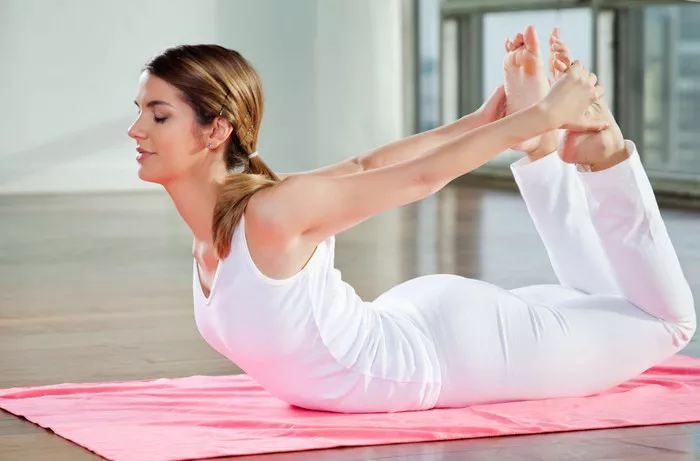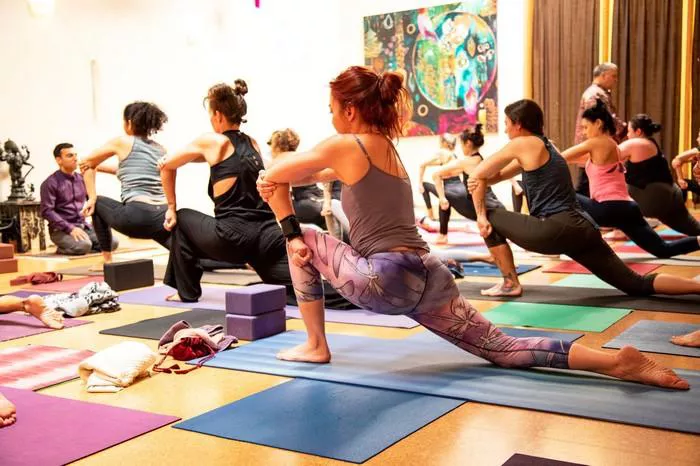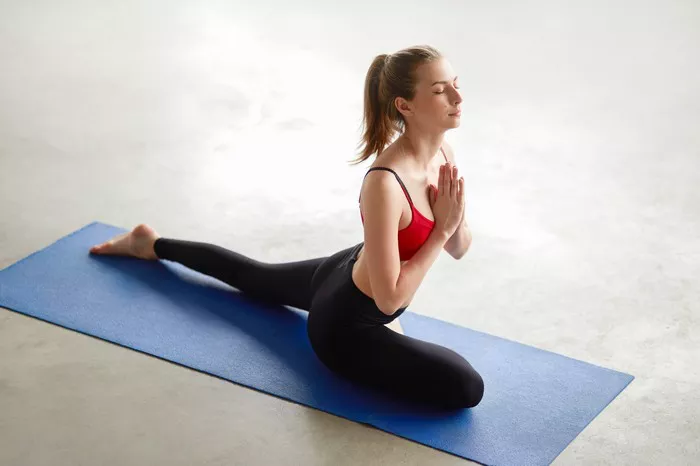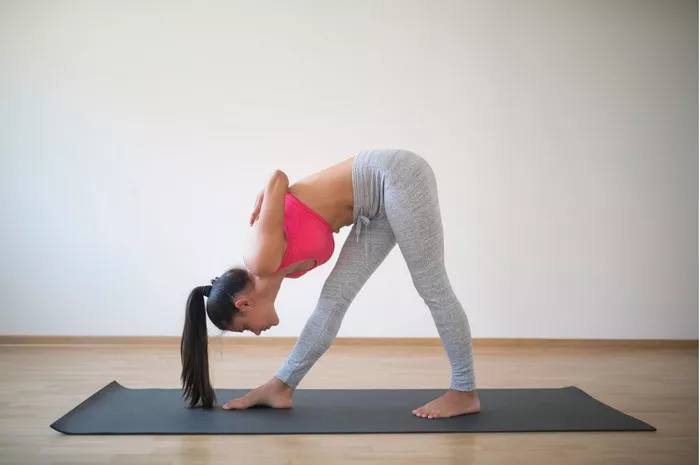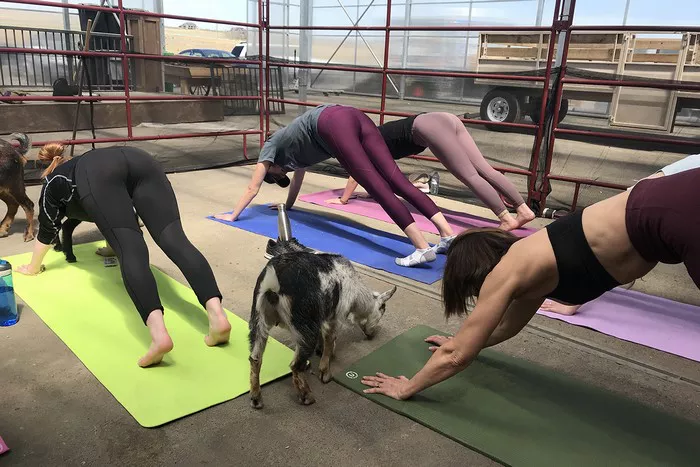Yoga is celebrated worldwide for its many benefits, ranging from stress relief to enhanced physical strength and flexibility. Among the various styles of yoga, Vinyasa yoga has gained immense popularity due to its dynamic flow and cardiovascular benefits. But one of the most common questions people ask is: “How many calories can I burn in a 30-minute session of Vinyasa yoga?”
This article will explore the calorie-burning potential of Vinyasa yoga in detail. We’ll dive into what makes Vinyasa yoga unique, the factors affecting calorie burn, and how it compares to other forms of exercise. Additionally, we’ll provide practical tips to maximize your calorie burn during your yoga practice.
What Is Vinyasa Yoga?
The Basics of Vinyasa Yoga
Vinyasa yoga is a dynamic and flowing style of yoga that connects movement with breath. Unlike traditional styles such as Hatha yoga, where postures are held for longer durations, Vinyasa focuses on smooth transitions between poses. This continuous movement creates a rhythm similar to a dance, often called a “flow.”
Core Features of Vinyasa Yoga
Synchronizing Breath with Movement: Each movement in Vinyasa yoga is coordinated with an inhalation or exhalation, enhancing focus and mindfulness.
Varied Sequences: No two Vinyasa classes are the same, as sequences are often designed creatively by instructors.
Dynamic Nature: The flowing transitions increase the heart rate, providing cardiovascular benefits.
Whole-Body Engagement: Vinyasa engages multiple muscle groups, offering a full-body workout.
Due to its active and engaging nature, Vinyasa yoga can serve as a form of low- to moderate-intensity cardiovascular exercise, which makes it effective for calorie burning.
Calorie Burn During Vinyasa Yoga
How Many Calories Can You Burn?
The number of calories burned during 30 minutes of Vinyasa yoga depends on several factors, including your body weight, metabolic rate, and the intensity of your practice. On average, here are some estimates:
- A 125-pound person can burn approximately 120–150 calories in 30 minutes.
- A 155-pound person can burn around 150–180 calories in 30 minutes.
- A 185-pound person might burn about 180–220 calories in 30 minutes.
These numbers reflect moderate-intensity Vinyasa yoga. However, more vigorous sessions that include advanced poses and rapid transitions can increase calorie burn.
Factors That Influence Calorie Burn
Body Weight:
Heavier individuals burn more calories because their bodies require more energy to perform the same movements.
For example, a 185-pound person will naturally expend more energy than a 125-pound person during the same Vinyasa flow.
Practice Intensity:
The pace of the session and the complexity of the poses play a crucial role. Faster flows or classes incorporating power yoga elements tend to burn more calories.
Adding arm balances, inversions, or standing poses like Warrior II can amplify the intensity.
Experience Level:
Beginners may burn fewer calories as they focus on mastering the poses and transitions, often moving more slowly.
Advanced practitioners can push their limits with challenging poses and faster sequences, increasing calorie expenditure.
Class Environment:
Practicing in a heated room (similar to Hot Vinyasa or Power Vinyasa) can increase your calorie burn due to the additional physical effort required to regulate body temperature.
Duration:
Naturally, the longer the session, the more calories burned. A 60-minute session may burn twice as many calories as a 30-minute session, especially if the intensity is maintained.
How Does Vinyasa Yoga Compare to Other Exercises?
While Vinyasa yoga offers significant benefits, its calorie-burning potential is generally lower than high-intensity workouts like running or cycling. Here’s a comparison of the approximate calories burned in 30 minutes by a 155-pound person:
Running (6 mph): 300 calories
Cycling (12–14 mph): 270 calories
Vinyasa Yoga: 150–180 calories
Hatha Yoga: 90–120 calories
Although Vinyasa yoga might not top the calorie-burning charts, its combination of strength training, flexibility, and mindfulness offers a holistic workout.
Additional Benefits of Vinyasa Yoga
While calorie burn is a major focus for many, it’s important to remember that Vinyasa yoga offers numerous other health benefits:
1. Improved Cardiovascular Health
The continuous movement in Vinyasa yoga gets your heart pumping, improving circulation and endurance over time.
2. Enhanced Strength and Flexibility
Poses like Plank, Downward Dog, and Chaturanga build muscle strength, while stretches like Forward Fold and Cobra improve flexibility.
3. Stress Reduction
Synchronizing breath with movement promotes mindfulness, reducing cortisol levels and alleviating stress.
4. Improved Balance and Coordination
The flowing transitions between poses challenge your balance and coordination, which are crucial for overall fitness.
5. Sustainable Weight Management
While Vinyasa yoga alone may not burn as many calories as intense cardio, it contributes to weight management when combined with a balanced diet and active lifestyle.
Maximizing Calorie Burn in Vinyasa Yoga
If your goal is to burn more calories, here are some strategies to make your Vinyasa yoga practice more effective:
1. Opt for Advanced Classes
Look for classes labeled as “Power Vinyasa” or “Advanced Vinyasa Flow,” which often feature more challenging sequences and faster paces.
2. Focus on Full-Body Engagement
Activate your muscles fully in each pose. For example, engage your core in Plank or Warrior III to enhance muscle activation and calorie burn.
3. Increase the Intensity
Perform faster transitions and hold challenging poses like Chair Pose or Warrior II longer to increase effort.
4. Add Strength Elements
Incorporate weights or resistance bands into your practice, or modify poses to make them more strength-intensive.
5. Practice in a Heated Environment
Hot Vinyasa yoga can elevate your heart rate and calorie burn. Ensure you stay hydrated and listen to your body in heated sessions.
Frequently Asked Questions
1. Can Vinyasa Yoga Help Me Lose Weight?
Yes, Vinyasa yoga can be a helpful component of a weight loss plan. While it burns fewer calories compared to high-intensity workouts, its focus on strength, flexibility, and mindfulness supports sustainable weight management.
2. Is 30 Minutes of Vinyasa Yoga Enough for a Workout?
Absolutely. A 30-minute Vinyasa yoga session can provide a balanced workout by engaging multiple muscle groups, boosting your heart rate, and calming your mind.
3. Can Beginners Burn as Many Calories as Advanced Practitioners?
Beginners may burn slightly fewer calories due to a slower pace and focus on learning the poses. However, as they become more comfortable with the practice, their calorie burn will increase.
Conclusion
In 30 minutes, Vinyasa yoga can help you burn between 120 and 220 calories, depending on factors like body weight, intensity, and experience level. While its calorie-burning potential may not match high-intensity cardio exercises, Vinyasa yoga offers a unique combination of physical and mental benefits that make it a valuable addition to any fitness routine.
Whether you’re seeking to improve your flexibility, build strength, or simply unwind, Vinyasa yoga provides a versatile and holistic approach to health. To maximize its calorie-burning potential, focus on challenging yourself with faster flows, advanced poses, or heated environments. Over time, you’ll not only notice changes in your physical fitness but also enjoy the mental clarity and inner peace that yoga brings.
Embrace the flow, and let Vinyasa yoga guide you toward a healthier, more balanced lifestyle.
Related Topics:




